Low Carb Low Potassium Foods
Eating a balanced diet is essential for your optimal health. But if you're trying to reduce the amount of carbs or potassium in your diet, it can be difficult to know what foods are best to eat.
Fortunately, there are plenty of low carb and low potassium foods that can provide the nutrition you need without straining your dietary restrictions.
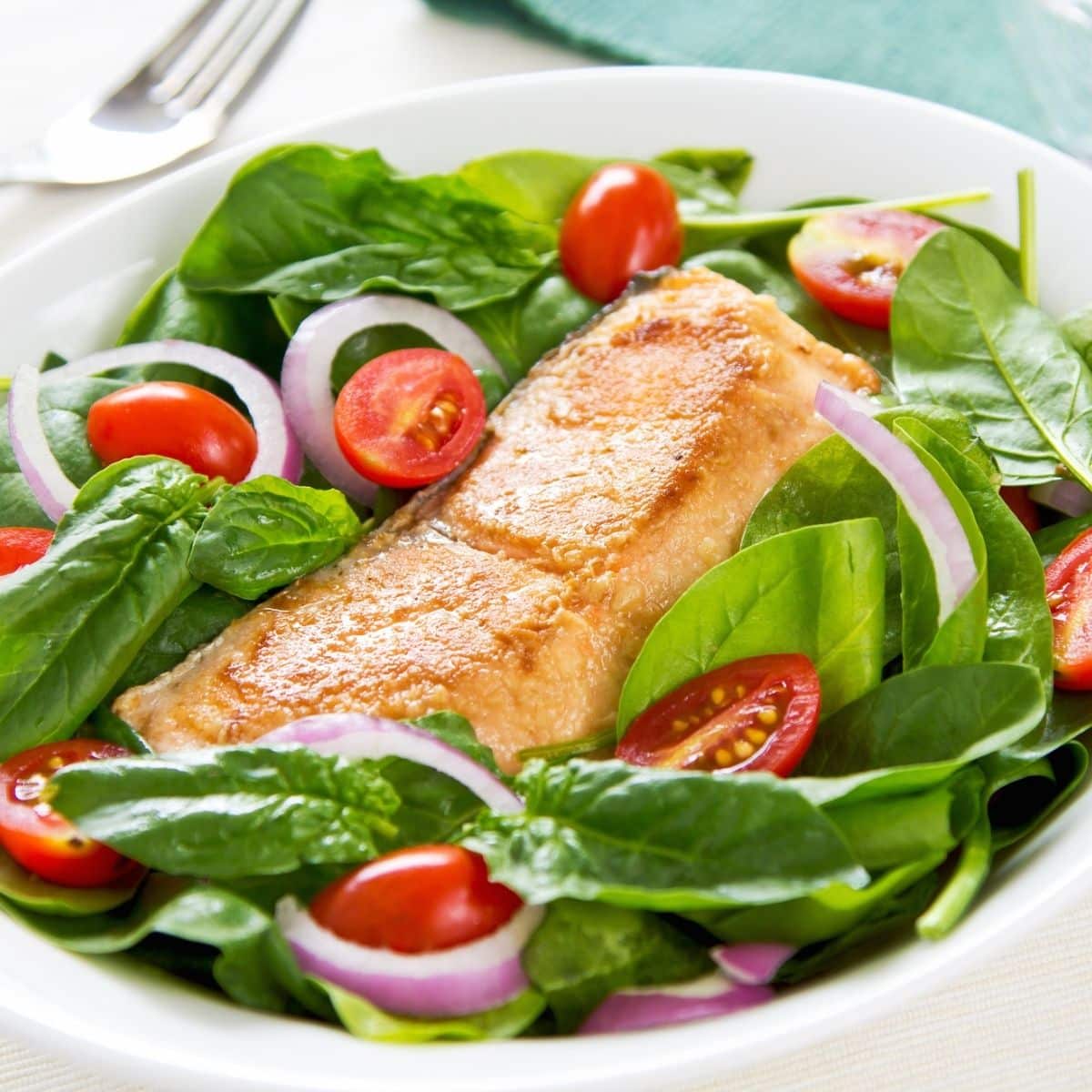
In this article, we'll explore some of the best options available so you can make sure you stay healthy while enjoying delicious meals.
It's important to remember that everyone has different needs when it comes to their diets and nutritional requirements. That said, eating these low carb low potassium foods provides an excellent starting point for anyone looking to maintain a balanced lifestyle while meeting specific dietary goals.
Jump to:
- Renal Diets Need Low Potassium Foods
- Eating Low Potassium Foods Includes Fruits
- Healthy Vegetables Are Low Potassium Foods
- Sample Snack Food Tray
- Celery
- Yellow squash
- Zucchini Squash
- Cauliflower
- Mushrooms
- Asparagus
- Eggplant
- Wax beans (rinsed)
- Bell Peppers
- Cucumbers
- FAQs for Low Potassium Foods
- Renal Diets Need Low Carb, Low Potassium Foods
Renal Diets Need Low Potassium Foods
Potassium is an important mineral, and especially significant when you're counting your milligrams for a renal diet. Potassium can affect your kidneys, and as you progress in kidney disease, many are people required to follow a low potassium diet. What happens if your potassium is high?
A lot of people find this very difficult. They find it hard to understand what foods are okay, and what food sources of potassium to avoid. And some people even go overboard and avoid every bit of potassium, when managing the amount that you consume is the most important thing. Make sure you check out these tips for a low potassium diet.
Your body still needs some potassium, as it's used in many muscle contractions and nerve endings. Sometimes it seems like it's easier just to cut out the source of the problem, but that's not always the best choice.
For More Recipes and Ideas --->> Get Your Free Meals and Recipes That Are Perfect for Pre-Dialysis Diets, Pre-Dialysis with Diabetes, or Dialysis Diets.
Eating Low Potassium Foods Includes Fruits
Low potassium foods in a diet are foods that you should eat more often than other foods that are high in potassium to add variety in your diet and allow you to have a plate full of food. There are actually a large amount of allowed foods on a renal diet that are low potassium.
You also want to be concerned about the amount of sodium (renal diet sodium limit) that is in foods but when it comes to fruits and vegetables, it's fairly easy to get low sodium because you can buy them fresh or frozen. That means there hasn't been a lot of sodium added to them during the canning process.
Some high potassium fruits, such as citrus fruits and dried fruits, are not the best choices for a renal diet. Lighter colored fruits and berries are among the better choices for low potassium fruits.
Apples, blackberries, cranberries, grapes, peaches and strawberries are some of the best low potassium feeds that you can eat.
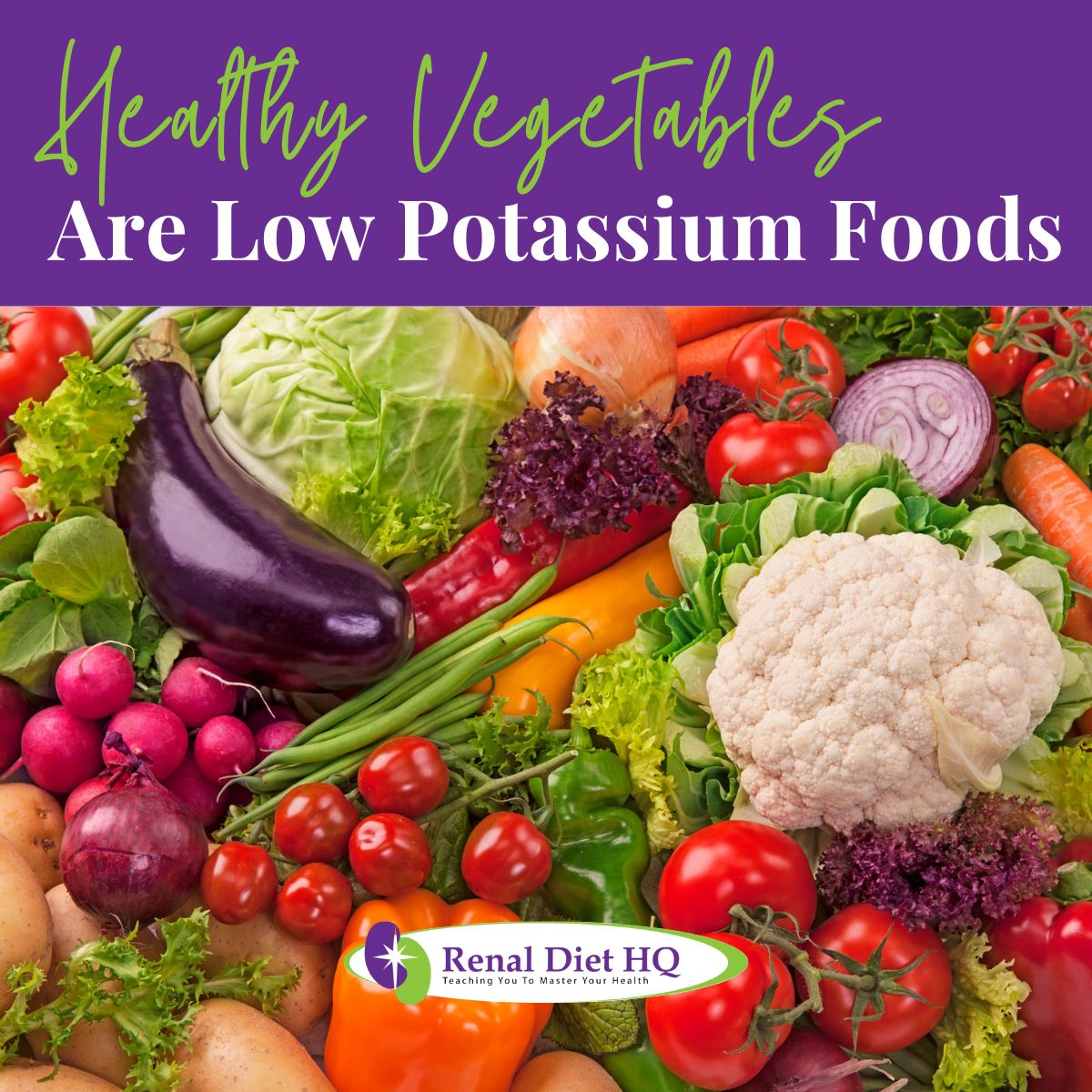
Healthy Vegetables Are Low Potassium Foods
With vegetables, more of the green and yellow vegetables are going to be low potassium foods. Well that's not completely true of every green food, because broccoli and brussels sprouts are both high potassium foods, many times green does win out as a low potassium food.
Beans, cabbage, celery, corn, cucumbers and radishes are all low potassium vegetables that can be placed on a fruit and vegetable plate for a party.
You want to avoid broccoli, raw carrots, tomatoes, and beans. Again you want to make sure that you're using fresh or frozen products, instead of canned, to reduce the sodium. If you want to use canned vegetables, rinse them first multiple times to reduce the amount of sodium they contain. Don't forget you can also practice leaching vegetables.
Sample Snack Food Tray
Now let's talk about a recipe to add together to make a good snack food tray that you can take to your next party. There are lots of renal diet snacks to try!
As far as fruit you can add:
- sliced apples
- cherries
- cranberries
- grapes
- peaches
- pineapple
- pears
- strawberries
As far as vegetables you can add:
- wax beans, rinsed
- cauliflower
- celery
- cucumber
- mushrooms
- peppers
- yellow squash
- zucchini squash
When you're creating your plate choose three or four from each category of fruit and vegetables and assemble your tray. Remember to add a dressing in the center that is an oil/vinegar mixture to lower the sodium and potassium of the tray.
Celery
Celery, holds remarkable benefits for individuals with chronic kidney disease due to its low carbohydrate and potassium content. With only 3 grams of carbohydrates per 1-cup serving, celery is an excellent choice for those with dietary restrictions, such as individuals managing diabetes or CKD. Its minimal impact on blood sugar levels makes it a valuable addition to low-carb or diabetic-friendly meal plans.
Furthermore, celery is low in potassium, making it an ideal option for individuals with CKD who need to limit their potassium intake. Excessive potassium can burden compromised kidneys, and incorporating celery into the diet provides a flavorful alternative without adding significant potassium.
Apart from its carbohydrate and potassium content, celery is rich in essential nutrients. It is an excellent source of vitamins A, C, and K, as well as folate and dietary fiber. This combination of vitamins and fiber supports healthy digestion, boosts immune function, and contributes to overall well-being.
Celery also contains antioxidants and anti-inflammatory compounds, such as flavonoids and polyphenols. These properties have been associated with potential health benefits, including reducing inflammation, improving heart health, and providing protection against certain types of cancer.
Incorporating celery into a CKD-friendly diet is simple. It can be enjoyed raw as a crunchy snack, added to salads, soups, or stir-fries, and used in vegetable juices. Its mild flavor and versatility make it an excellent choice for enhancing the nutritional value of various dishes without compromising taste or texture.
Embracing the nutritional benefits of celery, particularly its low carbohydrate and potassium content, can be a valuable addition to the meal plans of individuals with CKD. With its numerous health benefits and culinary versatility, celery deserves recognition as a nourishing and kidney-friendly vegetable.
Yellow squash
Yellow squash, a versatile and nutritious vegetable, offers a host of health benefits, especially for individuals with chronic kidney disease (CKD), as it is low in carbohydrates and potassium. Here's why yellow squash is a valuable addition to a CKD-friendly diet:
Health Benefits:
- Rich source of vitamins A and C, providing antioxidant benefits and supporting immune function.
- Contains dietary fiber, aiding in digestion and promoting regularity.
- Offers hydration benefits, as it is composed mainly of water, helping to maintain proper fluid balance.
Cooking Tips:
- Steam or sauté yellow squash lightly to preserve its nutritional value.
- Incorporate freshly chopped yellow squash into salads, stir-fries, or pasta dishes for added flavor and texture.
- Grill or roast slices of yellow squash for a delicious side dish.
Nutrition Facts/Flavor Combinations/Dietary Considerations:
- Low in calories, with approximately 19 calories per cup of raw sliced yellow squash.
- Yellow squash pairs well with various herbs and spices, such as basil or thyme, enhancing its natural flavors.
- It is naturally gluten-free, dairy-free, and suitable for vegan diets.
With these tips, incorporating yellow squash into your meals becomes an easy and beneficial choice. Its low carbohydrate and potassium content make it suitable for individuals with CKD who need to manage their intake of these nutrients.
Enjoy the versatility of yellow squash and explore its health benefits as you create delicious and kidney-friendly dishes. One of my favorite meals is this low sodium spaghetti squash recipes.
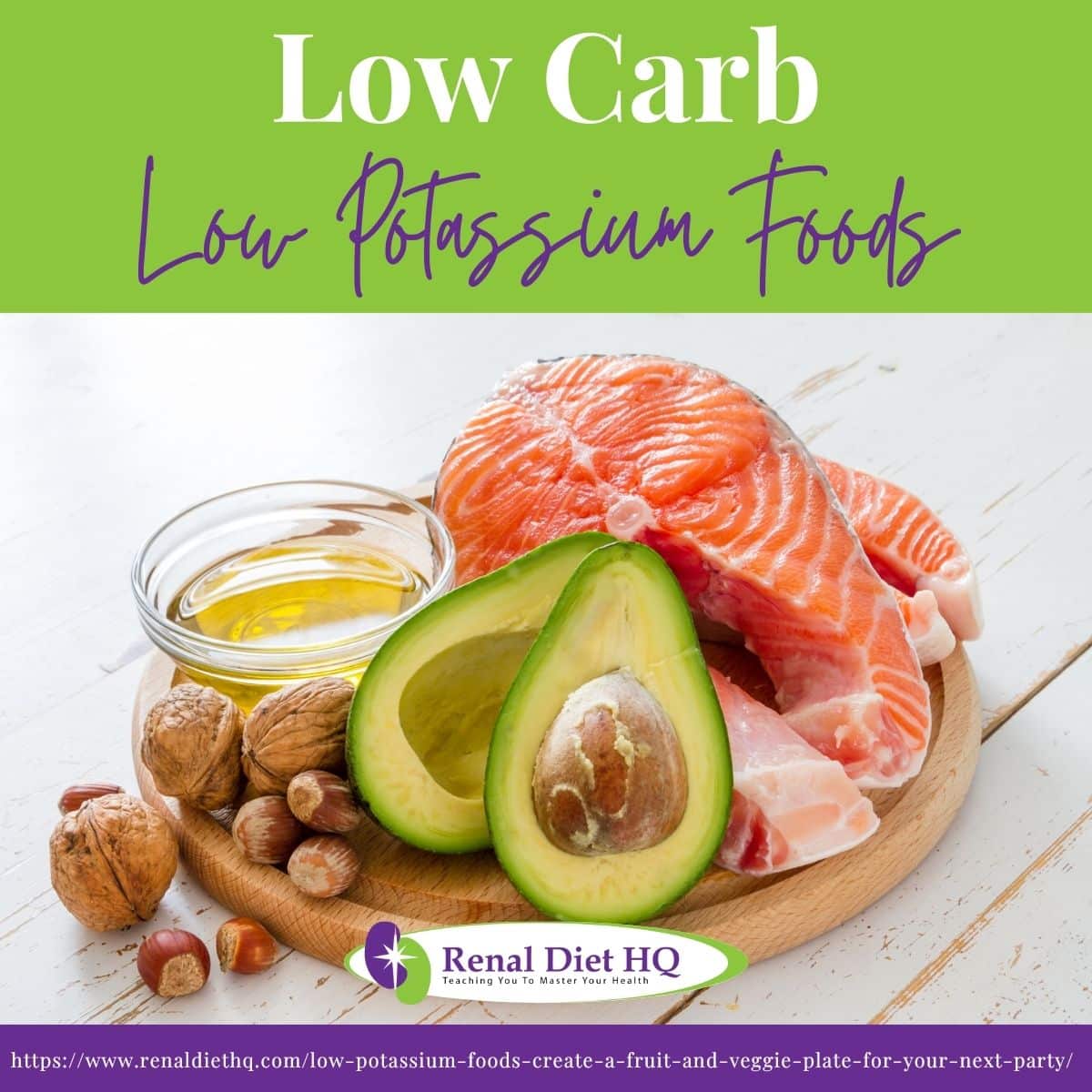
Zucchini Squash
Zucchini squash, a versatile and nutrient-packed vegetable, is an excellent choice for individuals with chronic kidney disease due to its low carbohydrate and potassium content. Let's explore the nutritional value and health benefits of zucchini squash, particularly for those following a low-carb, low-potassium diet:
Zucchini squash offers a range of cooking options, including steaming, sautéing, or roasting, allowing for various culinary creations. Its tender texture and mild flavor make it a versatile common ingredient that can be incorporated into a variety of dishes.
In terms of nutrition, 100 grams of raw zucchini squash contains just 17 calories and only 3.1 grams of carbohydrates, making it an excellent choice for individuals on low-carb diets. Moreover, zucchini squash is low in potassium, which is crucial for individuals with CKD who need to manage their potassium intake.
Beyond its low-carb and low-potassium qualities, zucchini squash is rich in essential nutrients. It is a good source of vitamins A and C, providing antioxidant benefits and supporting immune function. Additionally, zucchini squash contains dietary fiber, contributing to healthy digestion and promoting regular bowel movements.
The taste profile of zucchini squash is mild and slightly sweet, allowing it to complement a wide range of flavors and cuisines. Its versatility makes it suitable for various dishes, including stir-fries, salads, and even as a substitute for noodles in low-carb pasta recipes.
Overall, zucchini squash stands out as an affordable, nutrient-rich vegetable that aligns well with dietary restrictions for individuals with CKD. Its low carbohydrate and potassium content, combined with its culinary versatility, make it a valuable addition to a kidney-friendly meal plan. Embrace the health benefits and delightful flavors of zucchini squash in your cooking endeavors.
Cauliflower
Cauliflower (cauliflower renal diet), a cruciferous vegetable, is an incredibly versatile low carb and low potassium food. Not only does it have the unique ability to be prepared in numerous ways - from being boiled or steamed to baked and roasted - but cauliflower can also be used as a substitute for more calorie-dense foods like potatoes, rice, and even pizza crust!
Below are just some of the delicious possibilities when cooking with cauliflower:
Baked Cauliflower: Cut into florets and tossed with seasonings of choice before baking at 400°F until tender.
Roasted Cauliflower: Preheat oven to 425°F; cut cauliflower into florets; toss with olive oil and seasoning of choice; spread on parchment-lined baking sheet; Roast 25–30 minutes flipping halfway through.
Creamy Cauliflower Soup: In a large pot over medium heat cook 1 onion (chopped) in melted butter until softened. Add 6 cups chicken broth, 2 heads of cauliflower (cut into florets), one bay leaf, salt & pepper to taste; bring to a boil then reduce heat to simmer covered 15–20 minutes or until cauliflower is very soft.
Remove bay leaf then blend soup using an immersion blender or transfer batches to traditional blender or food processor blending until creamy.
Cheesy Cauliflower Bake: Preheat oven 375°F; Grease 9x13 inch pan with butter/oil sprayer; Cook one head of cauliflower broken into small pieces 10 minutes in boiling salted water.
Drain off water then return cauliflower back to pot stir in 3 tablespoons butter mix well add ½ teaspoon garlic powder ¼ teaspoon each dried oregano parsley thyme and ground black pepper stirring together evenly.
Spoon mixture into greased 9×13 inch baking dish sprinkle cheese over top cover tightly with foil bake 20 minutes remove foil continue baking 5 minutes longer serve warm.
Making healthy alternatives that taste great has never been easier than when utilizing all that cauliflower has to offer. Its versatility makes it easy to fit most recipes – so go ahead and give this veggie staple a try!
Mushrooms
Mushrooms are an excellent low carb, low potassium food option. They can provide a variety of cooking methods and offer many health benefits. When it comes to the nutritional content in mushrooms, they contain few calories and carbohydrates but still offer plenty of fiber and protein.
When finding substitutions for other high carbohydrate foods, mushrooms make a great replacement due to their neutral flavor profile that pairs well with almost any dish.
Additionally, when cooked correctly, these fungi can be incredibly delicious! When selecting mushrooms for your recipes, you can choose from various types with varying flavor profiles and textures.
From stir-fries to omelets or even vegan burgers – there is no shortage of recipe ideas when it comes to incorporating mushrooms into your diet. Not only do they bring tons of flavor, but also add texture and nutrition while keeping carbs and potassium levels very low. As such, this versatile ingredient should not be overlooked when planning out meals for a kidney diet!
Asparagus
Asparagus is an excellent low-carb and low-potassium vegetable that can be incorporated into a variety of meals. It's not only delicious, but it also has numerous health benefits. Here are just three reasons why you should add asparagus to your meal planning:
- High in nutrients - Asparagus is packed with vitamins and minerals such as Vitamin A, C, E, K and B6, folate, iron, copper and calcium.
- Low calorie and fat content - At only 20 calories per half cup serving, asparagus provides few calories while still giving the body essential nutrients for good health.
- Versatile cooking options - Asparagus can be steamed or boiled for a light side dish; roasted for added flavor; grilled to bring out its natural sweetness; sautéed with other vegetables or served raw in salads.
When preparing asparagus at home there are some simple tips to keep in mind to ensure perfect results every time:
- cut off the woody ends before cooking
- use thin stalks when making stir fry dishes
- if boiling or steaming use minimal water so the flavors won't get diluted
- serve immediately after cooking for optimal taste and texture.
With its delicate balance of sweet yet earthy flavors, asparagus pairs well with many different ingredients like garlic and lemon juice, parmesan cheese and butter, balsamic vinegar or nutmeg.
It can easily be incorporated into kidney-friendly recipes without sacrificing flavor combinations or compromising nutrition values. So don’t forget about this versatile veggie next time you plan your weekly menu! There is also vegetable juice for kidney disease.
Eggplant
Eggplant offers an interesting alternative for those on low-carb, low-potassium diets. It has rich flavor and unique texture – yet doesn’t contain as many carbohydrates or potassium.
In comparison to other vegetables commonly found in dishes such as stir fry and soups, eggplant stands out with relatively low levels of both carbs and potassium. A single half cup serving of cooked eggplant contains only five grams of net carbs and just seventeen milligrams of potassium.
Vegetables like green beans, celery stalks, zucchini squash, yellow squash, and cabbage all have more carbohydrates per serving when compared to eggplant while containing higher amounts of potassium as well. You can also easily learn how to season food without salt.
This makes it a great option if you're looking for a way to add flavor without spiking your carbohydrate or potassium levels too much. All these factors make eggplant an excellent choice for adding variety to any meal plan while still keeping within dietary restrictions set by medical professionals.
Wax beans (rinsed)
Wax beans, also known as yellow beans, are a nutritious choice, especially for individuals with chronic kidney disease (CKD), as they are low in carbohydrates and potassium. Let's explore the nutritional value and health benefits of wax beans.
Wax beans are an excellent fit for low-carb and low-potassium diets due to their minimal carbohydrate content and low potassium levels. This makes them a suitable choice for individuals with dietary restrictions or those aiming to manage their carbohydrate and potassium consumption.
In terms of nutrition, wax beans are rich in dietary fiber, providing support for healthy digestion and promoting regular bowel movements. They are also a good source of vitamins A and C, offering antioxidant benefits and supporting immune function.
Moreover, wax beans are low in calories, with approximately 35 calories per 100-gram serving. This makes them a favorable option for weight management and overall calorie control.
The mild flavor and tender texture of wax beans make them a versatile ingredient in various dishes. They can be incorporated into salads, stir-fries, soups, or served as a side dish. Their vibrant yellow color adds visual appeal to meals.
For individuals with CKD, wax beans can be a valuable addition to their meal plan, providing a nutrient-rich vegetable option that aligns with their dietary restrictions. However, as with any food, portion control and moderation are key factors to consider. Another amazing recipe is this black bean and rice burrito.
Bell Peppers
Is green bell pepper good for kidney patients? Bell peppers have been a beloved staple in diets since ancient times. Though they may not seem like much, these little gems can pack quite the punch when it comes to flavor and nutrition.
Here are just a few reasons why bell peppers should become an essential part of your low carb and low potassium diet:
- Grilling techniques: Whether you’re grilling them on a barbecue or roasting them in the oven, bell peppers bring out their sweetness and smokiness that pairs well with many proteins for delicious meals.
- Health benefits: Rich in vitamins A and C, bell peppers provide antioxidants that can help reduce inflammation as well as promote healthy skin, eyesight and immune system functions.
- Nutrient content: Not only are bell peppers low in carbs (3g per pepper) but also very low in potassium (only 175 mg per pepper). Plus they contain good amounts of fiber which helps keep your digestion running smoothly!
From recipes to food pairings, there are so many ways to enjoy this versatile vegetable. You can stuff them with ground meats or quinoa for a great meal option or even slice them up into salads.
And because of their mild taste and crunchy texture, bell peppers make the perfect addition to any dish - whether raw or cooked! So don't forget to add some color (and flavor!) to all your dishes with this amazing veggie!
Cucumbers
Cucumbers are a great addition to any low carb, low potassium diet. While they may not have the same packaging benefits as bell peppers – such as being able to be eaten raw without preparing or cooking – cucumbers still offer a variety of health implications for those looking to maintain their dietary goals, including their potassium goals.
Nutritionally speaking, cucumbers contain minimal amounts of carbs and potassium when compared to other vegetables. They also boast an impressively long shelf life; if stored correctly in the refrigerator, cucumbers can remain edible for up to two weeks.
When it comes to cooking methods, there's no shortage of ways cucumbers can be incorporated into meals. A popular option is adding them raw into salads or sandwiches for added crunch and flavor.
Cucumber slices make for a flavorful garnish on soups or stews as well. Alternatively, pickling is another way of preserving this vegetable while dialing up its flavor profile with herbs and spices.
No matter how you choose to enjoy cucumbers, they’re sure to add some extra nutrition and flavor to your meal plan - all while helping you meet your goal carbohydrate and potassium balance! Give this kidney friendly vegetable dip a try!
FAQs for Low Potassium Foods
When it comes to finding a diet that fits your lifestyle and dietary needs, many people are looking for low carb and low potassium solutions. While adverse reactions and portion control often play an important role when considering foods, there’s also flavor combinations and carb sources to consider as well.
Sodium content is another factor that must be taken into account, which can make finding the right balance of these elements difficult. But here's some good news: there are plenty of other nutritious options available that fit within this criteria!
From legumes like black beans, chickpeas, or edamame to whole grains such as quinoa or wild rice, you'll find no shortage of delicious flavors and nutrient-rich ingredients you can use in creating satisfying meals while on a low carb/low potassium diet. Does quinoa have high potassium?
Yes, there are several low-carb and low-potassium foods that are suitable for vegetarians and vegans.
Some examples include non-starchy vegetables like celery, cauliflower, and bell peppers, which are low in both carbs and potassium. Plant-based protein sources such as tofu, tempeh, seitan, and edamame are also low in carbs and potassium.
Additionally, vegan-friendly sources of healthy fats like plant-based milks, nuts, and seeds are generally low in both carbs and potassium.
Incorporating these foods into a vegetarian or vegan diet (kidney friendly vegan recipes) can provide adequate nutrition while maintaining low levels of carbohydrates and potassium, especially when combined with proper meal planning and portion control.
Yes, there are health benefits associated with eating low-carb and low-potassium foods for individuals with chronic kidney disease (CKD). A low-carb diet can help manage blood sugar levels, particularly important for those with diabetes and CKD, as it reduces the need for insulin and promotes better glycemic control.
Additionally, a low-potassium diet helps prevent hyperkalemia, a condition where potassium levels in the blood become dangerously high. By restricting potassium intake, CKD patients can prevent complications such as heart arrhythmias and cardiac arrest.
However, it's crucial to work with a healthcare professional or registered dietitian to ensure a balanced and individualized approach to nutrition while considering other dietary requirements and overall health goals.
When it comes to eating low carb and low potassium foods, there are a few dietary restrictions (dialysis dietary restrictions) you should be aware of. Shopping lists can help reduce the risk of unintentionally consuming higher levels of carbs or potassium than desired.
Portion control is also key when attempting to maintain specific nutritional goals; reducing cravings can become easier with adequate preparation.
Alternatives like food swaps can provide extra variety in your diet without sacrificing nutrition – for instance, swapping out potatoes for cauliflower. With careful consideration, you can make sure that each meal meets your individual needs while still tasting delicious!
When it comes to cooking low carb and low potassium foods, there are several great techniques that can help you get the most from your meals. Grilling is a popular option for those looking to make quick, tasty dishes without adding extra calories or fat.
Another great technique is microwave cooking; this helps keep nutrition in the food while also preserving flavor.
Slow cooking is another way to enjoy healthy meals with minimal effort. Meal prepping allows you to portion out recipes ahead of time so they're ready when you need them. Yes, there are plenty of kidney friendly crock pot recipes to check out.
Finally, don't forget about substituting ingredients like high-carb items for healthier options like vegetables or whole grains. With these tips, you'll be able to create delicious and nutritious meals that fit into any diet!
Renal Diets Need Low Carb, Low Potassium Foods
Incorporating low carb and low potassium foods into your diet can be a beneficial strategy for maintaining a balanced and healthy lifestyle, especially for individuals with specific dietary restrictions like renal diets.
By choosing kidney friendly fruits such as apples, blackberries, cranberries, grapes, peaches, and strawberries, and low potassium vegetables like beans, cabbage, celery, corn, cucumbers, and radishes, you can create delicious and nutritious meals.
Additionally, incorporating vegetables like celery, yellow squash, zucchini squash, cauliflower, mushrooms, asparagus, eggplant, and wax beans offers a wide range of flavors and cooking options. These foods not only provide essential nutrients but also support overall health and well-being.

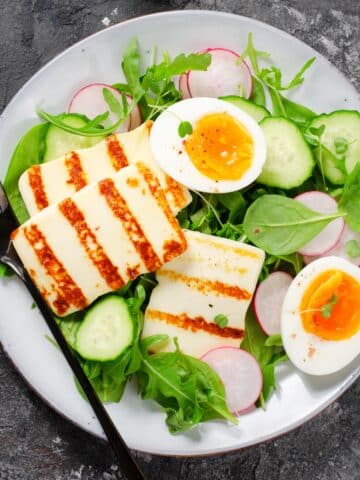
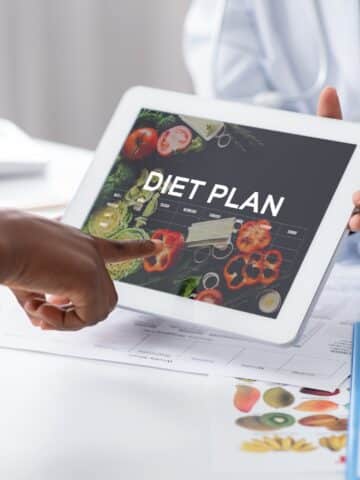
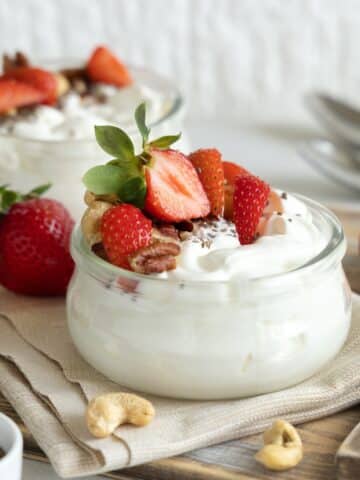
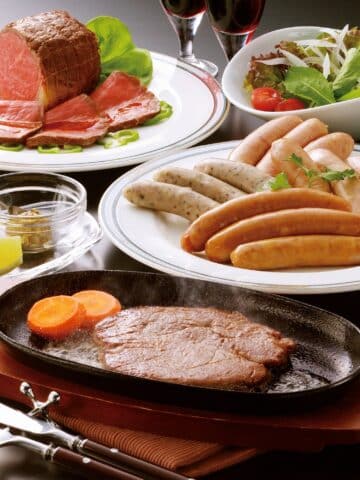
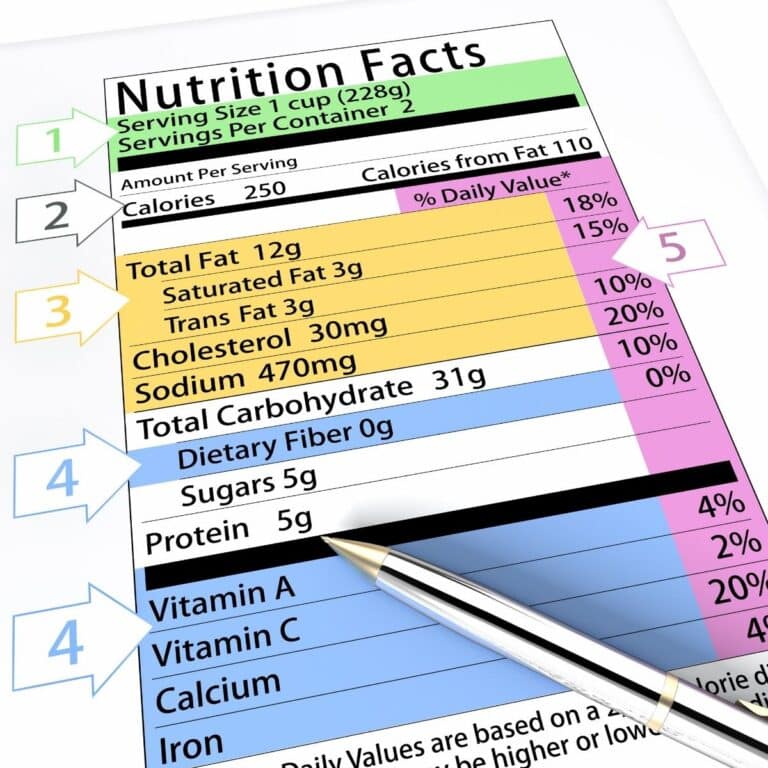
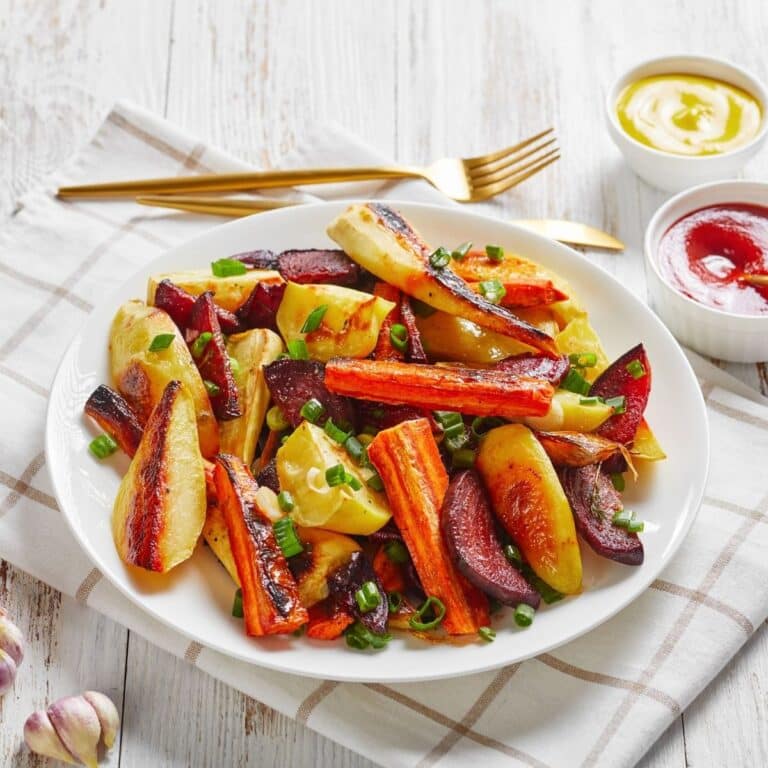
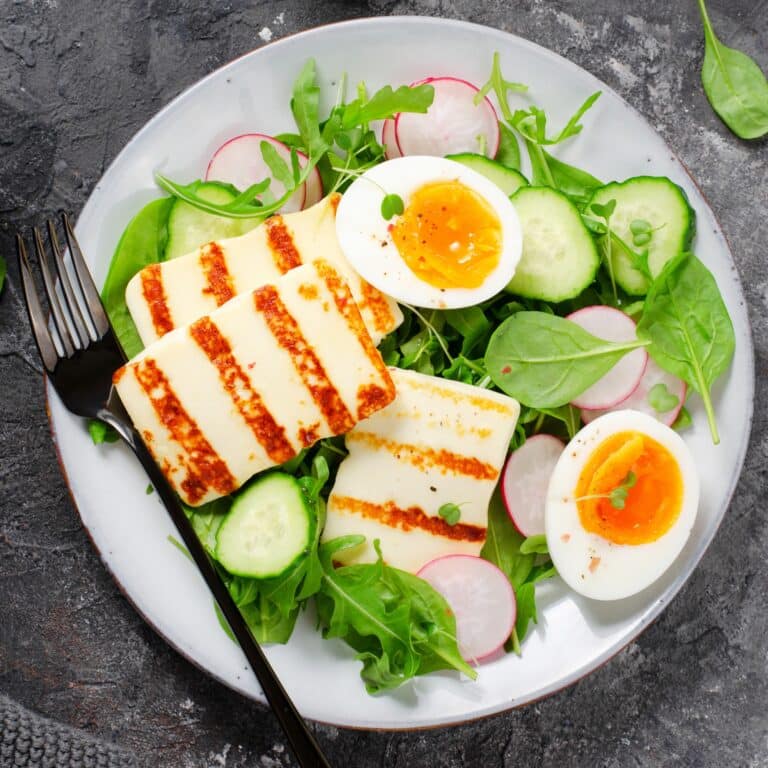
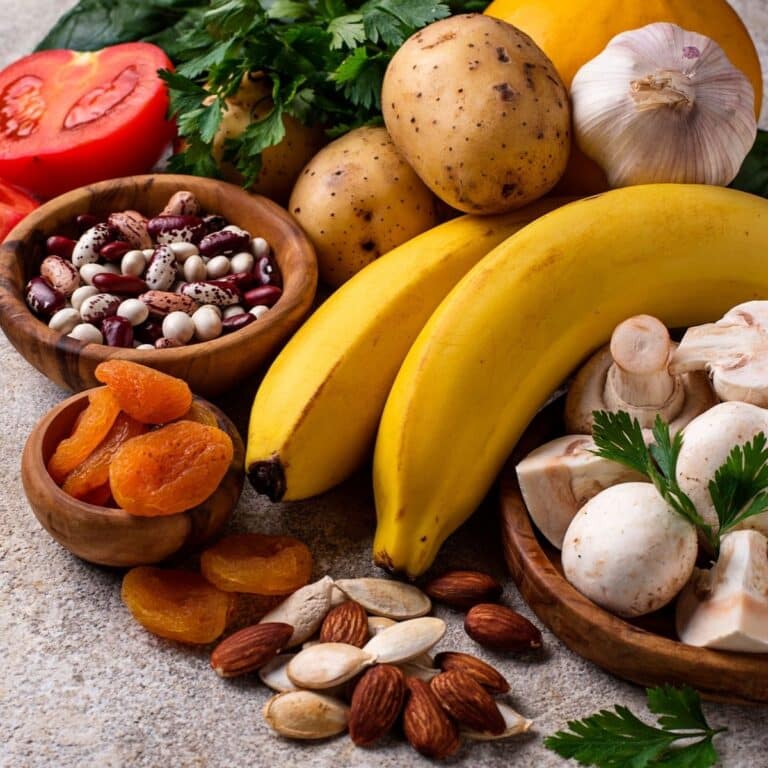
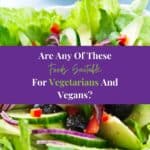
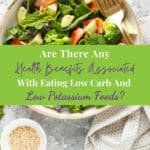
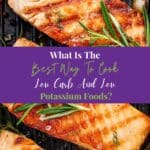
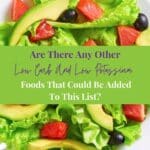
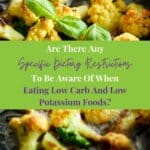
I'm very confused by your suggestions regarding beans. You wrote "Beans, cabbage, celery, corn, cucumbers and radishes are all low potassium vegetables that can be placed on a fruit and vegetable plate for a party. You want to avoid broccoli, raw carrots, tomatoes, and beans.
First sentence says beans are low in potassium and last sentence says to avoid beans. Please let me know which one is it. Are beans to be avoided or should be consumed?